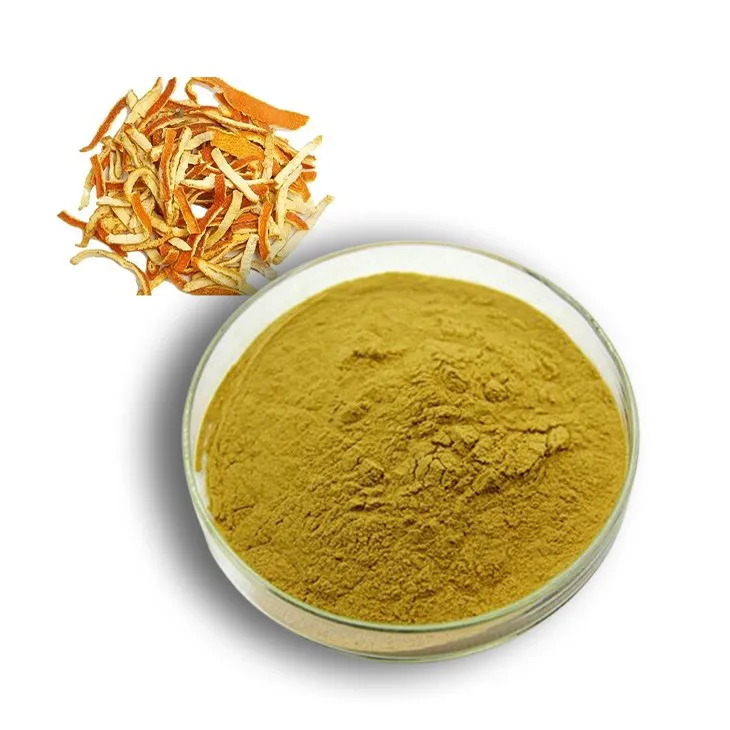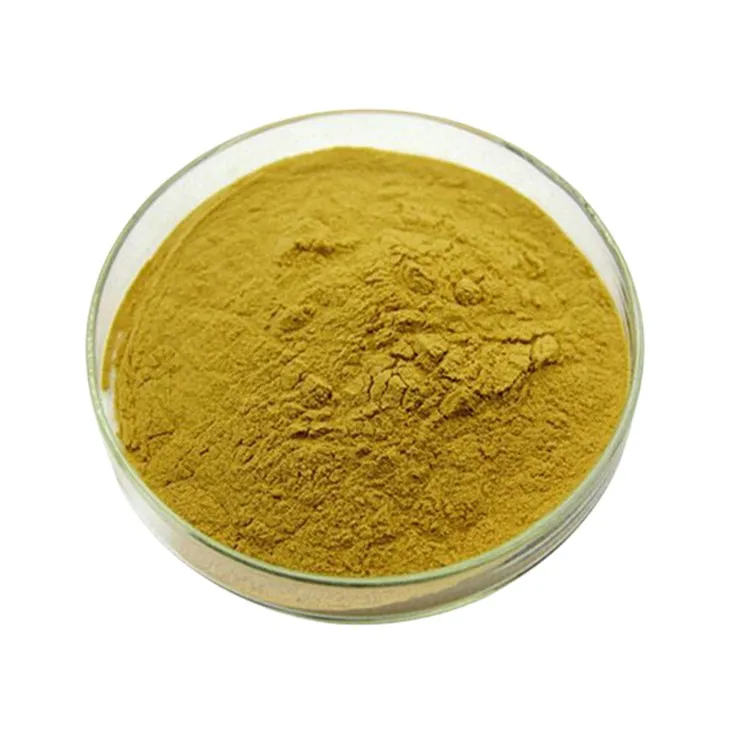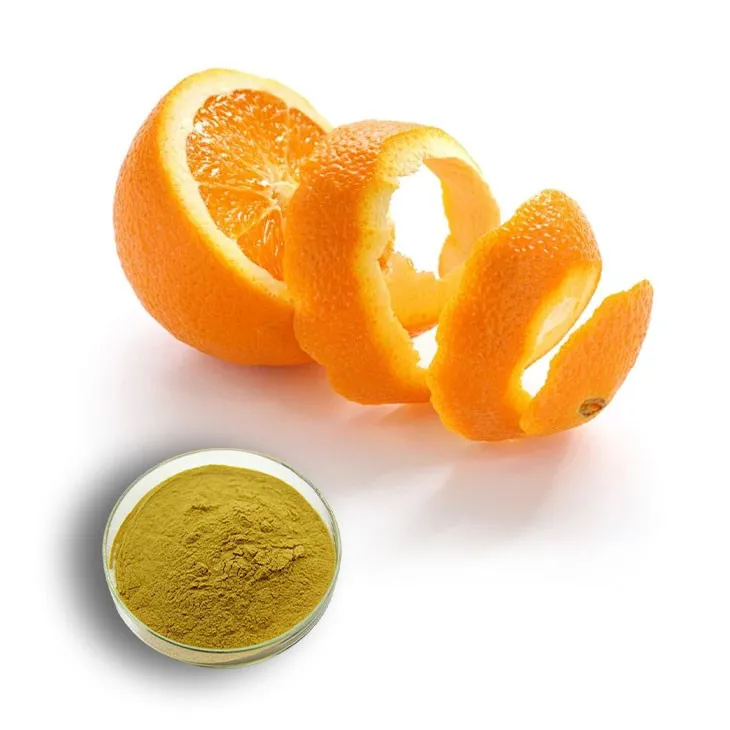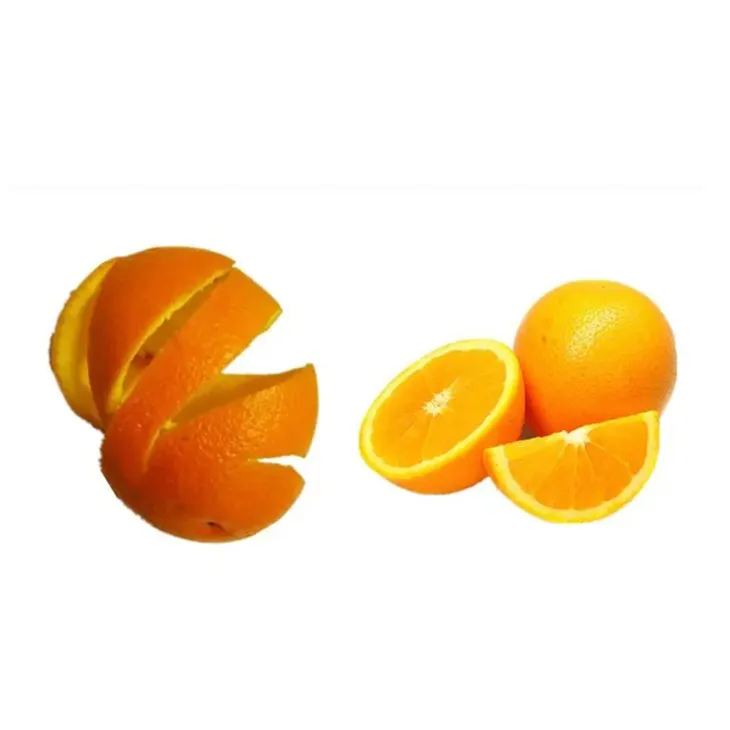- 0086-571-85302990
- sales@greenskybio.com
Organic Supercritical CO₂ Extraction of Hesperidin
2024-11-28

1. Introduction
Hesperidin is a flavanone glycoside that is predominantly found in citrus fruits, especially in orange peels. It has gained significant attention in recent years due to its numerous health - promoting properties. These include antioxidant, anti - inflammatory, and anti - diabetic activities, making it a valuable compound in the fields of nutraceuticals and cosmetics. Traditional extraction methods such as solvent extraction have certain limitations, including the use of large amounts of organic solvents, which may be toxic and require complex purification steps. Supercritical CO₂ extraction, on the other hand, offers a more environmentally friendly and efficient alternative for obtaining Hesperidin from orange peels.

2. Properties of Supercritical CO₂
Supercritical CO₂ is a state of carbon dioxide where it has properties that are intermediate between a gas and a liquid. It has a high diffusivity similar to that of a gas, which allows it to penetrate easily into the matrix of orange peels. At the same time, it has a density comparable to that of a liquid, enabling it to dissolve Hesperidin effectively. Another important property of supercritical CO₂ is its low critical temperature (31.1°C) and pressure (73.8 bar). This means that relatively mild operating conditions can be used, which is beneficial for preserving the integrity of hesperidin and reducing the energy consumption during the extraction process.

3. The Organic Supercritical CO₂ Extraction Process
3.1. Pretreatment of Orange Peels
Before the extraction process, orange peels need to be properly pretreated. This typically involves drying the peels to reduce their moisture content. High moisture content can interfere with the extraction efficiency as it may compete with hesperidin for interaction with supercritical CO₂. The dried peels are then usually ground into a fine powder to increase the surface area available for extraction. This allows for better contact between the orange peel matrix and the supercritical CO₂, facilitating the extraction of hesperidin.
3.2. Extraction Parameters
- Pressure: The pressure is one of the most critical parameters in supercritical CO₂ extraction. For hesperidin extraction, a pressure range of typically 100 - 300 bar is often used. Higher pressures tend to increase the solubility of hesperidin in supercritical CO₂, but too high a pressure may also lead to extraction of unwanted impurities.
- Temperature: As mentioned earlier, the supercritical state of CO₂ can be achieved at relatively low temperatures. For hesperidin extraction, a temperature range of 40 - 60°C is commonly employed. Increasing the temperature can enhance the diffusivity of supercritical CO₂, but excessive heat may cause degradation of hesperidin.
- Flow rate of CO₂: The flow rate of supercritical CO₂ also affects the extraction efficiency. A moderate flow rate is preferred. If the flow rate is too low, the extraction process will be slow, while a very high flow rate may not allow sufficient time for the CO₂ to interact with hesperidin and extract it completely.
- Extraction time: The extraction time usually ranges from 1 - 3 hours. Longer extraction times may increase the yield of hesperidin, but it may also lead to the extraction of other components from the orange peels, which may require additional purification steps.
3.3. Collection of the Extract
After the supercritical CO₂ has passed through the orange peel matrix and dissolved hesperidin, the extract needs to be collected. This is typically done by reducing the pressure of the supercritical CO₂ - hesperidin mixture. As the pressure is reduced, the supercritical CO₂ reverts to a gaseous state, leaving behind the hesperidin extract. The collected extract may then be further purified if necessary, for example, to remove any remaining traces of lipids or other impurities that may have been co - extracted.

4. Advantages of Organic Supercritical CO₂ Extraction of Hesperidin
- High - quality product: Compared to traditional extraction methods, supercritical CO₂ extraction results in a higher - quality hesperidin extract. Since the process uses no or very little organic solvents, there is less risk of solvent residues in the final product, which is crucial for applications in nutraceuticals and cosmetics.
- Environmentally friendly: Supercritical CO₂ is a non - toxic and non - flammable gas. It does not contribute to air pollution or leave behind hazardous waste, making it an environmentally sustainable extraction method.
- Efficient extraction: The unique properties of supercritical CO₂, such as its high diffusivity and density, enable efficient extraction of hesperidin. This can lead to higher yields compared to some traditional methods, especially when the extraction parameters are optimized.
- Scalability: Supercritical CO₂ extraction can be easily scaled up for industrial - scale production. This is important for meeting the growing demand for hesperidin in various industries, such as the food, pharmaceutical, and cosmetic industries.

5. Applications of Hesperidin in Nutraceuticals and Cosmetics
- Nutraceuticals: In the field of nutraceuticals, hesperidin is used for its various health - promoting properties. It can be incorporated into dietary supplements, functional foods, and beverages. For example, hesperidin - containing supplements are often marketed for their antioxidant and anti - inflammatory benefits, which may help in reducing the risk of chronic diseases such as heart disease and cancer.
- Cosmetics: Hesperidin is also a valuable ingredient in cosmetics. Its antioxidant properties make it useful for protecting the skin from oxidative stress, which can cause premature aging. It can be found in various skin care products, such as creams, lotions, and serums, where it may also contribute to skin brightening and improving skin elasticity.
6. Challenges and Future Directions
- Cost - effectiveness: Although supercritical CO₂ extraction has many advantages, the initial investment in equipment for this extraction method can be relatively high. This may limit its adoption, especially by small - and medium - sized enterprises. Future research could focus on developing more cost - effective extraction systems or optimizing the existing ones to reduce the overall cost of production.
- Optimization of extraction parameters: While there are general guidelines for the extraction parameters such as pressure, temperature, and flow rate, further optimization is still needed for different sources of orange peels and specific product requirements. This could lead to even higher yields and better quality of hesperidin extracts.
- New applications: As research on hesperidin continues, new applications may be discovered. For example, there may be potential in the development of hesperidin - based drugs for treating specific diseases. Future studies could explore these new applications and expand the market for hesperidin - related products.
7. Conclusion
Organic supercritical CO₂ extraction of hesperidin is a promising method that offers several advantages over traditional extraction techniques. It provides a high - quality product, is environmentally friendly, and is suitable for industrial - scale production. With the increasing demand for hesperidin in nutraceuticals and cosmetics, further research and development in this area are expected to overcome the current challenges and open up new opportunities for the wider application of hesperidin. By optimizing the extraction process and exploring new applications, hesperidin can be more effectively utilized as a valuable bioactive compound derived from orange peels.
FAQ:
What are the advantages of supercritical CO₂ extraction of hesperidin?
Supercritical CO₂ extraction of hesperidin has several advantages. Firstly, supercritical CO₂ has the diffusivity of a gas and the density of a liquid, which enables it to effectively extract hesperidin. Secondly, compared to traditional methods, it ensures better quality control. Additionally, it can be easily scaled up for industrial production, promoting the wider application of hesperidin in fields like nutraceuticals and cosmetics.
How does supercritical CO₂ extraction ensure better quality control?
The supercritical CO₂ extraction process is more selective compared to some traditional extraction methods. It can precisely target hesperidin and avoid extracting unwanted substances, which helps in maintaining the purity and quality of the extracted hesperidin. Also, the mild extraction conditions in supercritical CO₂ extraction are less likely to cause degradation or alteration of hesperidin, thus ensuring better quality control.
What makes supercritical CO₂ suitable for hesperidin extraction?
Supercritical CO₂ has unique properties that make it suitable for hesperidin extraction. Its diffusivity allows it to penetrate into the matrix where hesperidin is present easily, similar to a gas. At the same time, its liquid - like density gives it the ability to dissolve hesperidin effectively. Moreover, supercritical CO₂ is a non - toxic and environmentally friendly solvent, which is also an important factor for its suitability in hesperidin extraction.
Can supercritical CO₂ extraction of hesperidin be cost - effective for industrial production?
Yes, it can be cost - effective for industrial production. Although the initial setup cost for supercritical CO₂ extraction equipment may be relatively high, the process can be easily scaled up. Once the scale of production is large enough, the cost per unit of hesperidin extracted can be reduced. Also, the high selectivity of the extraction process reduces the need for further purification steps, which can save costs in the long run.
What are the potential applications of hesperidin extracted by supercritical CO₂?
Hesperidin extracted by supercritical CO₂ has potential applications in various fields. In nutraceuticals, it can be used as an ingredient for dietary supplements due to its antioxidant and other beneficial properties. In cosmetics, it can be added to skincare products for its potential anti - aging and skin - protecting effects. It may also have applications in the pharmaceutical industry for further research and development of drugs related to its biological activities.
Related literature
- Supercritical Fluid Extraction of Bioactive Compounds from Orange Peel: A Review"
- "Optimization of Supercritical CO₂ Extraction of Hesperidin from Citrus Peels"
- "The Role of Supercritical CO₂ Extraction in the Isolation of Hesperidin for Nutraceutical and Cosmetic Applications"
- ▶ Hesperidin
- ▶ citrus bioflavonoids
- ▶ plant extract
- ▶ lycopene
- ▶ Diosmin
- ▶ Grape seed extract
- ▶ Sea buckthorn Juice Powder
- ▶ Beetroot powder
- ▶ Hops Extract
- ▶ Artichoke Extract
- ▶ Reishi mushroom extract
- ▶ Astaxanthin
- ▶ Green Tea Extract
- ▶ Curcumin Extract
- ▶ Horse Chestnut Extract
- ▶ Other Problems
- ▶ Boswellia Serrata Extract
- ▶ Resveratrol Extract
- ▶ Marigold Extract
- ▶ Grape Leaf Extract
- ▶ blog3
- ▶ blog4
-
Standard - process propolis extract powder.
2024-11-28
-
How to make powder with peppermint oil?
2024-11-28
-
Organic konjac powder, Australia.
2024-11-28
-
Chinese Cassia Seed Extract Suppliers.
2024-11-28
-
Suppliers of Organic Diosmin Powder.
2024-11-28
-
Hesperidin with the best reviews.
2024-11-28
-
Organic Epimedium Extract Powder Supplier.
2024-11-28
-
Propolis Extract Powder
2024-11-28
-
Yohimbine Bark Extract
2024-11-28
-
Senna Leaf Extract
2024-11-28
-
Diosmin
2024-11-28
-
Peppermint Extract Powder
2024-11-28
-
Dandelion Root Extract
2024-11-28
-
Red Wine Extract
2024-11-28
-
Purple Sweet Potato Extract
2024-11-28
-
Tongkat Ali Extract
2024-11-28
-
Sophora Japonica Flower Extract
2024-11-28





















